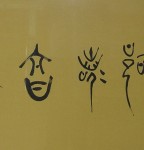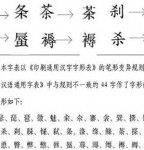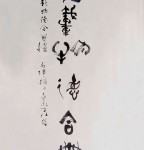Indic Scripts (Brahmic)
The Indic or Brahmic scripts are the most extensive family of writing systems that we haven’t looked at yet: abugidas. An abugidas is a segmental writing system which is based on consonants and in which vowel notation is obligatory but secondary. This contrasts with an alphabet proper (in which vowels have a status equal to that of consonants) and with an abjad (in which vowel marking is absent or optional).
Indic scripts are used throughout South Asia, Southeast Asia and parts of Central and East Asia (e.g. Hindi, Sanskrit, Konkani, Marathi, Nepali, Sindhi and Sherpa). They are so widespread that they vary a lot, but Devanagari is the most important one.
Devanagari Ligatures and Matra
Hindi and Nepali are both written in the Devanāgarī (देवनागरी) alphabet. Devanagari is a compound word with two roots: deva, meaning “deity,” and nagari, meaning “city.” Together, they imply a script that is both religious and urban or sophisticated.
To represent sounds that are foreign to Indic phonology, additional letters have been coined by choosing an existing Devanagari letter that represents a similar sound and adding a dot (called a nukta) beneath it. It is written from left to right, lacks distinct letter cases and is recognizable by a distinctive horizontal line running along the tops of the letters and linking them together.
In addition, a few other diacritics are used at the end of words, such as the dots illustrated below and the diagonal line, called virama, drawn under the last letter of a word if it is a consonant.
One interesting aspect of Brahmic and in particular of Devanagari here is the horizontal line used for successive consonants that lack a vowel between them. They may physically join together as a “conjunct,” or ligature, a process called samyoga (meaning “yoked together” in Sanskrit). Sometimes, the individual letters can still be discerned, while at other times the conjunction creates new shapes.
Here is a close-up of a nice ligature, the ddhrya ligature:
A letter in Devanagari has the default vowel of /a/. To indicate the same consonant followed by another vowel, additional strokes are added to the consonant letter. These strokes are called matras, or dependant forms of the vowel.
| < Prev | Next > |
|---|
- 2009-03-25 - 得“自然”,备“古雅”--评米芾书法(转载)
- 2008-12-15 - 书法浅识(四) 转载
- 2008-12-14 - 书法浅识(三) 转载
- 2008-12-13 - 书法浅识(二) 转载
- 2008-12-13 - 书法浅识(一) 转载
- 2008-12-10 - 字里千秋,中国的书法艺术
- 2008-12-02 - 汉字书法的意境美
- 2008-11-08 - "丑"之为美:兼谈书法的审美标准(书法美学)
- 2008-09-28 - Ding Shimei "Yin Yang" (2008AD) Seal Script,
- 2008-09-16 - 转文恒山


















